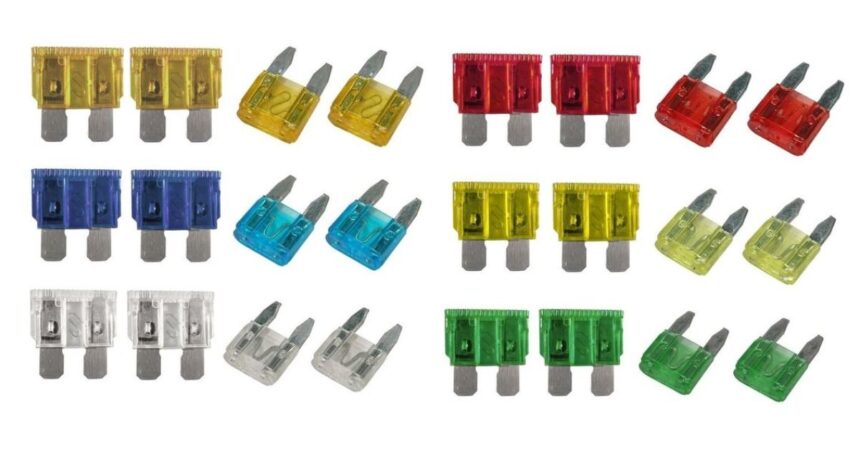Introduction
Lighting fuses are a crucial component of any electrical system, ensuring the safety and longevity of devices by preventing circuit overloads. Understanding the wattage capacity of a lighting fuse can help homeowners and professionals make informed decisions when managing electrical systems. In this article, we will delve into the specifics of lighting fuses, their wattage capacity, and key considerations to ensure optimal performance and safety.
What is a Lighting Fuse?
A lighting fuse is a safety device designed to protect electrical circuits from overcurrent conditions, such as short circuits or overloads. It operates by breaking the electrical circuit when the current exceeds a specified threshold, preventing potential damage to appliances or fire hazards.
How Many Watts Can a Lighting Fuse Handle?
The wattage capacity of a lighting fuse depends on several factors, including:
- Voltage Rating: The standard household voltage in the United States is approximately 120V or 240V.
- Ampere Rating of the Fuse: The fuse’s ampere (amp) rating determines its current-carrying capacity.
To calculate the wattage a fuse can handle, use the formula:
Watts = Volts x Amps
For example, if you have a 10-amp fuse at 240 volts:
Watts = 240V x 10A = 2,400 watts
Similarly, a 15-amp fuse at 120 volts can handle:
Watts = 120V x 15A = 1,800 watts
Common Lighting Fuse Ratings in Homes
Most residential electrical systems use fuses rated between 5 amps and 20 amps. Here’s a quick breakdown:
- 5-Amp Fuse: Suitable for smaller circuits, such as low-voltage lighting systems or small appliances.
- Example Wattage Capacity: 600 watts (at 120V) or 1,200 watts (at 240V)
- 10-Amp Fuse: Commonly used for moderate lighting loads or standard circuits.
- Example Wattage Capacity: 1,200 watts (at 120V) or 2,400 watts (at 240V)
- 15-Amp Fuse: Typically used in larger circuits, accommodating multiple lighting fixtures.
- Example Wattage Capacity: 1,800 watts (at 120V) or 3,600 watts (at 240V)
- 20-Amp Fuse: Designed for high-capacity circuits or heavy-duty lighting systems.
- Example Wattage Capacity: 2,400 watts (at 120V) or 4,800 watts (at 240V)
Factors to Consider When Choosing a Fuse
When selecting a lighting fuse, consider the following:
- Circuit Voltage: Determine whether your system operates at 120V or 240V.
- Current Requirements: Calculate the total current drawn by all devices connected to the circuit.
- Safety Margin: Choose a fuse rated slightly higher than the expected current draw but within safe limits to prevent nuisance blowing.
- Fuse Type: Different types of fuses (e.g., fast-blow, slow-blow) cater to specific applications.
- Compliance with Regulations: Ensure the fuse complies with local electrical codes and standards.
Why Do Fuses Blow?
Fuses blow when the current flowing through them exceeds their rated capacity. Common causes include:
- Overloaded Circuits: Too many devices connected to the same circuit.
- Short Circuits: Faulty wiring or damaged appliances causing an unintended current path.
- Faulty Devices: Appliances with internal issues drawing excessive current.
- Improper Fuse Rating: Using a fuse with a lower amp rating than required for the circuit.
Safety Tips for Using Lighting Fuses
To ensure the safe and effective operation of lighting fuses:
- Use Correct Ratings: Always match the fuse’s ampere rating to the circuit’s requirements.
- Inspect Regularly: Check fuses periodically for signs of wear or damage.
- Replace with Identical Fuses: When replacing a blown fuse, use one with the same specifications.
- Avoid Overloading Circuits: Distribute electrical loads across multiple circuits to prevent overloads.
- Consult Professionals: If unsure, seek advice from a licensed electrician.
Top Trending FAQs About Lighting Fuses
1. What Size Fuse Do I Need for My Lighting System?
The size of the fuse depends on the total wattage and voltage of your lighting system. Calculate the current draw using the formula:
Amps = Watts / Volts
Select a fuse with a rating slightly above the calculated amperage.
2. Are Fuse Panels Still Legal and Safe to Use?
Fuse panels are legal in many areas but may not meet modern safety standards. Upgrading to circuit breakers is recommended for enhanced safety and convenience.
3. Should I Use a Fuse or a Circuit Breaker for My Lighting Circuit?
Fuses and circuit breakers serve similar purposes, but circuit breakers are more convenient and reusable. Consult an electrician to determine the best option for your system.
4. How Do I Select the Appropriate Fuse for LED Light Strips?
LED light strips typically have low current requirements. Calculate the total current draw of the LED system and select a fuse with a suitable rating.
5. What Happens if a Fuse Fails to Operate in a Lighting Circuit?
If a fuse fails to operate, it can lead to overheating, potential damage to devices, or even fire hazards. Always use high-quality fuses and inspect them regularly.
Conclusion
Understanding the wattage capacity of lighting fuses is essential for maintaining safe and efficient electrical systems. By calculating the appropriate fuse ratings, considering safety factors, and addressing common issues, you can ensure the reliability of your lighting circuits. Remember to consult professionals for complex installations or if you encounter recurring electrical problems. A properly selected and maintained fuse can protect your home and appliances from potential electrical hazards.




